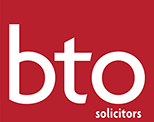02 October 2017
Paul Motion considers the new law on Unjustified Threats in relation to intellectual property actions.
Threatening to sue for alleged infringements of trade marks, design rights and patents could spectacularly backfire. Under the old law any person who was “aggrieved by” an “Unjustified Threat” to bring such proceedings could themselves sue the person making that threat and claim damages. Worse, the “aggrieved” person need not be the individual or organisation who had copied the design, or infringed the trade mark or patent. “Aggrieved person” was wide enough to cover anyone who could assert that his or her commercial interests had been damaged by the threat.
|
|
The remedy for unjustified threats was even available against professional advisers. This created a potentially absurd situation. Courts work on the principle of fair notice. To avoid criticism for premature litigation and consequent possible exposure to awards of expenses it is usually necessary to explain to the other party in some detail why you think your client has a remedy. Directly linked to that is the concept encouraged by most judicial processes (and specifically required for example by the Commercial action pre litigation protocol in Scotland as well as equivalent provisions under the CPR in England and Wales) that the other party be given full details and fair notice of the case against it. But doing that in this area of the law could get you sued.
Under the old law, the threat of litigation in relation to patents, trade marks and designs could result in the person who is threatened counterclaiming. This turned the tables and forced the threatener to prove the validity of all its rights and its intention to follow through with court action. Professional advisers who were sued could end up having to prove all their client’s rights and intentions, to justify sending a letter before action that in any other area of law would be regarded as standard.
The Intellectual Property (Unjustified Threats) Act 2017 came into force on 1 October. This legislation takes a more sensible approach and also harmonises the position in relation to trade marks, design rights and patents. Normally professional advisers threatening litigation on behalf of the rights owner will no longer be subject to the risk of litigation in their own right, subject to their being able to prove that they were acting on the instructions of their clients (and this needs to be made clear in any threat letter or email).
The new law broadens somewhat the question of who may be threatened with what. So for example the person copying a design or infringing a trade mark may not only be threatened with litigation for these acts, but also for related activity such as selling or distributing infringing products. The legislation also establishes a list of what are known as “permitted communications” so that correspondence to secondary infringers that would have been an actionable threat under the old law is no longer actionable.
The unjustified threats regime did not apply to copyright under the old law (nor to common law wrongs such as misuse of confidential information or to passing off) and this position remains unchanged under the new law. The Intellectual Property Office has issued guidance on the new act. Click here to view.
Notwithstanding the relative increase in protection, anyone contemplating intellectual property litigation should take professional advice and also bear in mind that in the digital world, threat letters can readily end up on social media where they may attract adverse comment. Further, the underlying policy of discouraging unjustified threats remains intact. If you have no intention of going to court, don’t make the threat!
Paul Motion is a partner and solicitor advocate with BTO Solicitors LLP and heads their Tech/IP Team.



